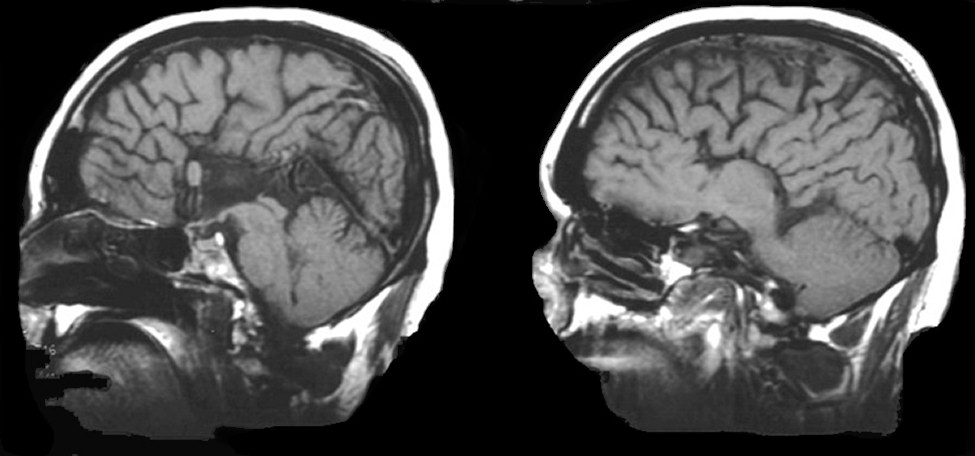

![]()
The earliest callosal axons appear about day 74 of embryogenesis. It assumes an adult configurtion by day 115 of embryogenesis.
Axons crossing the corpus callosum follow a preformed glial pathway laid down as the commisural plate within the lamina terminalis(developing starting day 34). Agenesis of the corpus callosum can thus arise from failure of the commisural plate to develop or from degeneration of commisural axons. In the case of the former condition, there arises a glial barrier to the axons, which may be redirected within the hemisphere, in what is known as the Bundle of Probst (see figure below).
Prevalence of Callosal Agenesis is about 2% based on surveys in North America. It is often sporadic, although genetic causes are described: One such condition is Aicardi syndrome (callosal agenesis, chorioretinal lacunae, epilepsy, mental retardation and spinal anomlies) is found only in girls, and is thought to be X-linked (Xp22), with lethality to males in utero.
Callosal agenesis is frequently partial, and is often associated with other dysplasias. Thus it is generally classified as a neuronal migration defect (other members of this category include Schizencephaly, Holoprosencephaly, Arhinencephaly, Septo-Optic Dysplasia Colpocephaly, Lissencephaly (Agyria)). The Arnold-Chiari malformation and its variants are related to disorders of cerebellar development.
Clinically, it may be clinically inapparent, but detailed testing may show deficits in interhemispheric information transfer. Learning disabilities and mental retardation may also be associated. The diagnosis is made by neuroimaging examination. EEG typically shows interhemispheric asynchrony.
Revised
05/21/06.
The Electronic Curriculum is copyrighted 1998, Case Western Reserve University
School of Medicine.